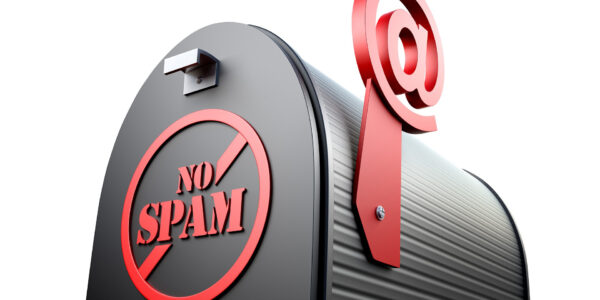Tired of being constantly bombarded with junk emails? An estimated 90% of all emails sent are spam. These are unsolicited emails that are often sent in volume, either for promotional purposes or as a means of phishing. This spam can fill up our inboxes and serve as a nuisance when trying to distinguish important emails. To help reduce these junk emails, here are six things that you can do.
Choose the right email provider
Some email services have better spam filters in place than others, helping to direct more spam emails straight to your junk folder. One good free example is iCloud Mail, which you can find out how to set up here: https://setapp.com/how-to/set-up-icloud-mail-on-your-mac. There are added spam filter programs that you can pay to download. Some of these filters can also help screen emails for malicious content (such as links containing viruses).
Create folders and filters
Some email servers allow you to create folders and filters that can help to direct certain emails away from your primary inbox. While this doesn’t reduce spam, it can help you to distinguish important emails more easily. You can also use folders to prioritise important emails, as well as separating spam.
Avoid opening spam emails
You should avoid opening spam emails, clicking on links within spam emails or replying to them. This can send information to the sender to let them know that it is a valid active email address – and could open the floodgates to more spam. You can usually work out if an email is spam just by looking at the header (which this guide https://pepipost.com/blog/how-to-read-email-headers-to-identify-spam/ delves more into). That said, not all spam is identifiable without opening it.
Be careful of unsubscribing
While it may seem like a good idea to unsubscribe from certain spam mailing lists, this can sometimes encourage more spam. Hitting unsubscribe tells senders that your email is valid and active – this information may be shared with other companies and individuals that may then respond by sending junk emails to you.
Be careful how you promote your email address
A lot of today’s spam is sent using spambots that automatically scan websites looking for email addresses to send junk to. By not displaying your email address on your website and social media bio, you can stop these spambots finding you. Alternatives to displaying your email address could include getting visitors to submit a form or using address munging (which is explained in more detail here at https://www.webopedia.com/TERM/M/munging.html).
Know when to report spam
Some spam can be illegal. Under the CAN-SPAM Act of 2003, it is illegal for emailers to use misleading headlines or subscribe you to mailing lists without an opt-out feature. ‘Phishing’ emails are also illegal. You should report such emails to prevent senders from continuing to mail them out. This guide https://www.techrepublic.com/article/how-to-report-a-phishing-or-spam-email-to-microsoft/ offers information on how to report emails.





